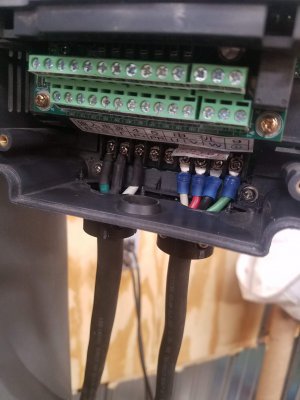- Joined
- Jan 7, 2016
- Messages
- 3,380
After purchasing a Huanyang VFD to convert my single phase 220 to 3 phase 220 I discovered that the cable management sucks on this VFD. Not only are the terminals quite small considering the size of wire I wanted to use, but the wire cord was going to hang from those terminals. I tried using a small hole saw to make provisions for the typical metal wire clamp, but the end result was not good. Not enough room for the nut and the protruding wire clamp into the VFD. So, off to the house to fire up Solidworks on the old confuser and then 3D print my result. I think it turned out pretty darn good. I left some of the area around the cord clamps open, just because. I could easily print another one and close it up.
Here is a linky to the thingy on Thingverse. https://www.thingiverse.com/thing:4542400
Here is a linky to the thingy on Thingverse. https://www.thingiverse.com/thing:4542400
Attachments
Last edited:





